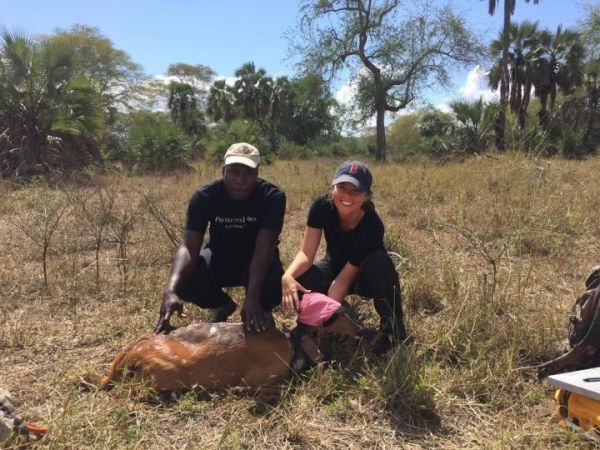A team of Princeton ecologists took advantage of a rare opportunity to study what happens to an ecosystem when large carnivores are wiped out.
“Large carnivores play a critical, and disproportionate, role in their ecosystems, and their populations are declining worldwide,” said Justine Atkins, a graduate student in ecology and evolutionary biology at Princeton. “However, there is real reason to be hopeful in many of these systems,” she said. She and a team of colleagues found evidence that reintroducing key carnivores in a large-mammal ecosystem could undo the damage caused by their removal. Their work appears in the March 8 issue of the journal Science.
The researchers were working in Gorongosa National Park, where the Mozambican civil war took a tremendous toll on wildlife populations. Most herbivore species have been recovering, but several major large carnivores — leopards, hyenas and African wild dogs — were eliminated from the park.
“That’s a tragic thing, but what it does is enable us to study how behavior and ecology changes when the predators are removed,” said Robert Pringle, an associate professor of ecology and evolutionary biology and the senior author on the paper. “It’s not quite an experiment, but it’s almost like one. We found that one of the common antelope species, bushbuck, which typically is a very shy, secretive forest-dweller, has expanded out into the open plains. The plants in the plains are very nutritious, and the bushbuck that have colonized those areas are bigger and in better shape than their counterparts in the forest. And the presence of bushbuck in this new habitat has negative effects on the plants that bushbuck eat.”
Read more at Princeton University
Image: Justine Atkins, a graduate student in ecology and evolutionary biology at Princeton University, works with Paolo Tonecas, the park veterinarian of Gorongosa National Park, to collar and measure a bushbuck. Atkins and her colleagues hypothesized that the elimination of the leopards, wild dogs and hyenas during the Mozambican civil war had created a "landscape of fearlessness," where the formerly timid bushbuck now browsed freely -- to the detriment of the local vegetation. (Credit: Justine Atkins, Princeton University)


